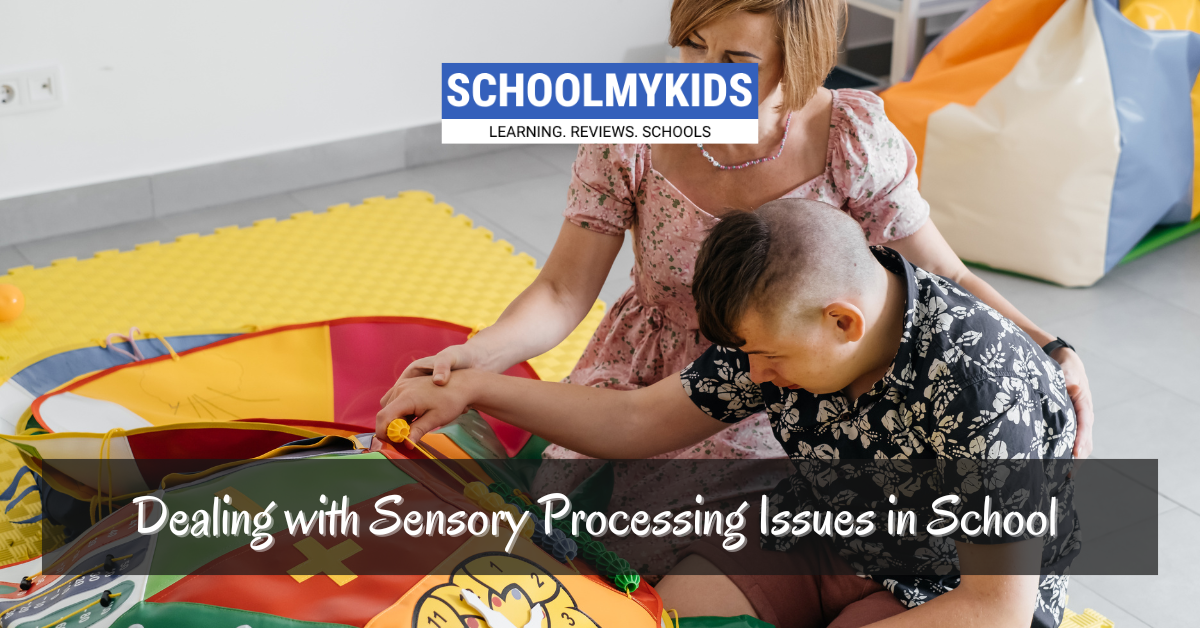School is a crucial part of a child’s life, shaping their social, emotional, and cognitive development. For most children, it’s a place of learning and growth. However, the classroom environment can be overwhelming for some due to sensory processing issues.
Understanding Sensory Processing Issues
Sensory processing, the way our brain interprets information from our main senses: sight, sound, touch, taste, smell, and movement. Children with sensory processing issues have difficulty processing and responding to sensory input. This can lead to various challenges, from feeling overwhelmed by loud noises to being unable to sit still.
It’s important to understand that sensory processing issues are not behavioral problems. Children with sensory processing difficulties are not being intentionally disruptive; they are simply struggling to cope with their environment.
The Impact on Classroom Learning
A classroom can cause sensory overload for children with such issues. The combination of lights, sounds, textures, and movement can be overwhelming. This sensory overload can manifest in various ways, including:
- Difficulty concentrating: Excessive noise or visual distractions can make it hard for a child to focus on their work.
- Behavioral challenges: Sensory overload can lead to frustration and meltdowns.
- Avoidance behaviors: Children might avoid certain activities or places within the classroom.
- Physical discomfort: Uncomfortable clothing or furniture can be a constant source of irritation.
Creating a Sensory-Friendly Classroom
Teachers play an important role in creating a safe and supportive classroom environment. Here are some strategies to help:
Reduce Sensory Overload
- Minimize noise levels by using soft materials, curtains, and sound-absorbing panels.
- Control lighting by using natural light when possible and avoiding fluorescent lights.
- Provide opportunities for movement breaks, such as stretching or short walks.
Accommodate Different Sensory Needs
- Offer various seating options, including chairs with different levels of support.
- Provide fidget toys or sensory tools to help children regulate their senses.
- Allow children to wear headphones to reduce noise sensitivity.
Create a Predictable Routine
- Establish a consistent daily schedule to help children anticipate what will happen next.
- Use visual aids and timers to help children understand transitions.
Build a Supportive Environment
- Use positive reinforcement and encouragement.
- Start teaching children self-regulation techniques, such as deep breathing or mindfulness.
- Collaborate with parents to understand their child’s sensory needs.
Tips for Teachers
- Be Patient and Understanding: Children with sensory processing issues need extra time and support.
- Educate Yourself: Learn about sensory processing disorders to better understand your students’ needs.
- Observe Your Students: Consider how different sensory stimuli affect your students.
- Communicate with Parents: Open communication with the child’s parents is essential for creating a supportive setting.
- Seek Professional Help: If you find yourself struggling to handle a student’s sensory processing issues, consult a school counselor or occupational therapist.
Conclusion
Remember, every child is unique, and what works for one child may not work for another. Experimenting with different strategies is important to find what works best for each student. By creating a sensory-friendly classroom, you can help children feel more comfortable, confident, and successful.
Sensory processing issues are known to be challenging. However, with constant understanding, patience, and the proper techniques, teachers can make a substantial difference in the lives of their students.








Be the first one to comment on this story.